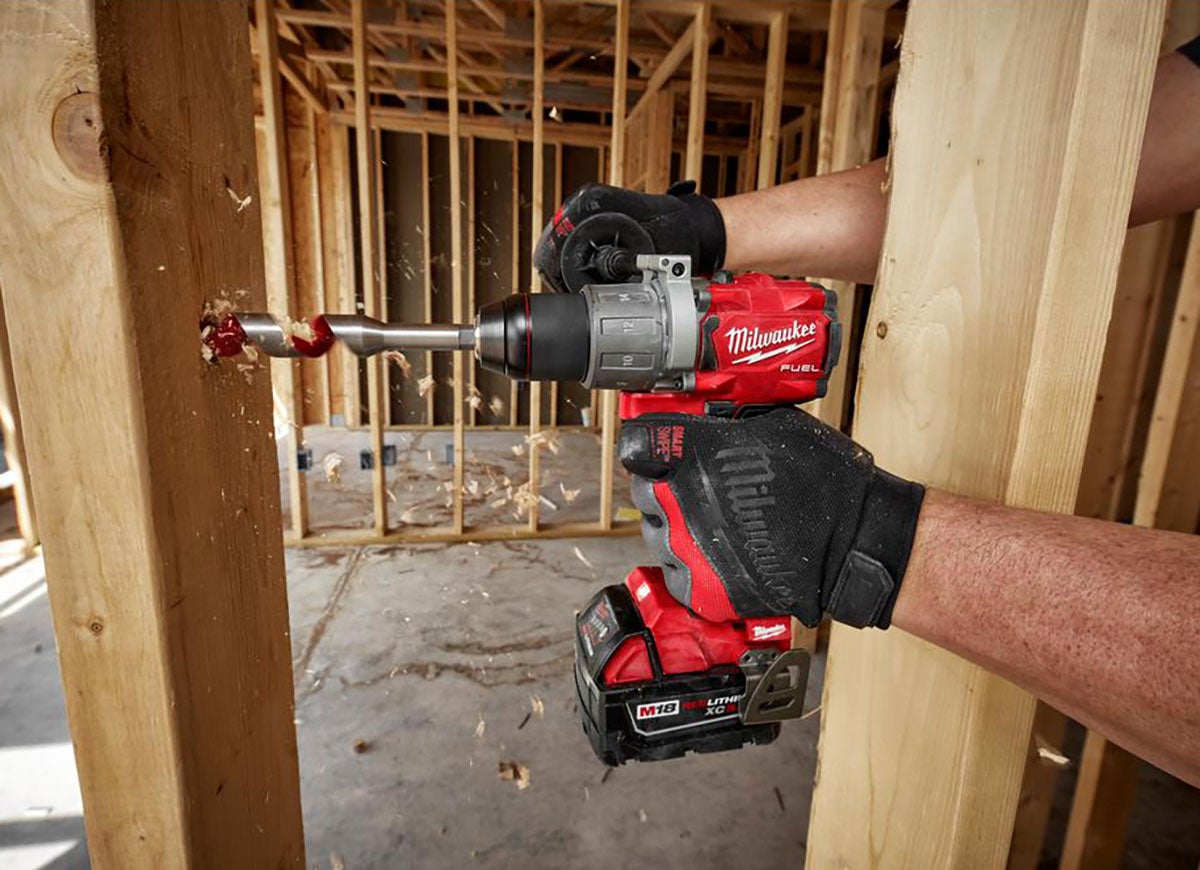

The “hammer” action can be attributed to a special clutch which will deliver around 30,000bpm (500 per second) which is a hard to imagine number. Similar again to the traditional Drill/Driver, most hammer drills will feature a ½” chuck and will be able to switch from drill mode to hammer drill mode.

The Bosch Impactor 26618 ($369, Ohio Power Tool) gives you the best of both worlds which can switch between drill and impact driver, however at that price you can also pick up a 2 tool kit with both tools (see CLPK22-180). Less ideal for finished woodworking as the impact mechanism can kick in at any point and will offer slightly less control in that sense compared to a traditional drill. More power and more control make these tools ideal for driving screws, bolts and other fasteners.
#Hammer drill vs impact driver concrete drivers#
The impact drivers uses a hex shank which does limit the ability to use drill bits or 2 sided driver bits. The added benefit of this very rapid on/off of torque is that if the bit should be jammed you are not going to feel the twisting on your wrist like you do with a traditional drill. This gives the motor a boost in torque and since the anvil is hit at a rate of around 3000bpm (or 50 times per second) the added torque feels very constant. Once the motor reaches a certain level of resistance an impact gear kicks in and pounds an anvil in the same direction the motor is already spinning. Increasing in popularity the impact driver is similar to the more traditional drill/driver with the added feature in the impact gear mechanism. Sometimes spinning the tool instead of the bit and people can get injured, because of this fact there is an upper limit on how much torque these tools can effectively have. When you get to larger units like the very popular Milwaukee Hole Hawg ($279, Ohio Power Tool) and the torque rating starts to get pretty high the unit can become more difficult to control. The traditional drill/driver is a very versatile tool because it can do two very common tasks drilling holes and driving fasteners. Typically there tools will come with a 3/8” or ½” chuck and can vary greatly in speed, power and size. They’ve been around since the invention of power tools and my guess is if you are reading this blog you have several of these traditional drill/drivers in your possession already. Hopefully we can clear up any confusion that might still be out there. We’ll go over some of the basics of how the different tools operate and some of the most common jobs for each. Potato patato what’s the different right? Well depending on the tool and what job you want to do there is going to be a lot of difference among these tools.


 0 kommentar(er)
0 kommentar(er)
